How to Keep Your Chainsaw Ready to Go
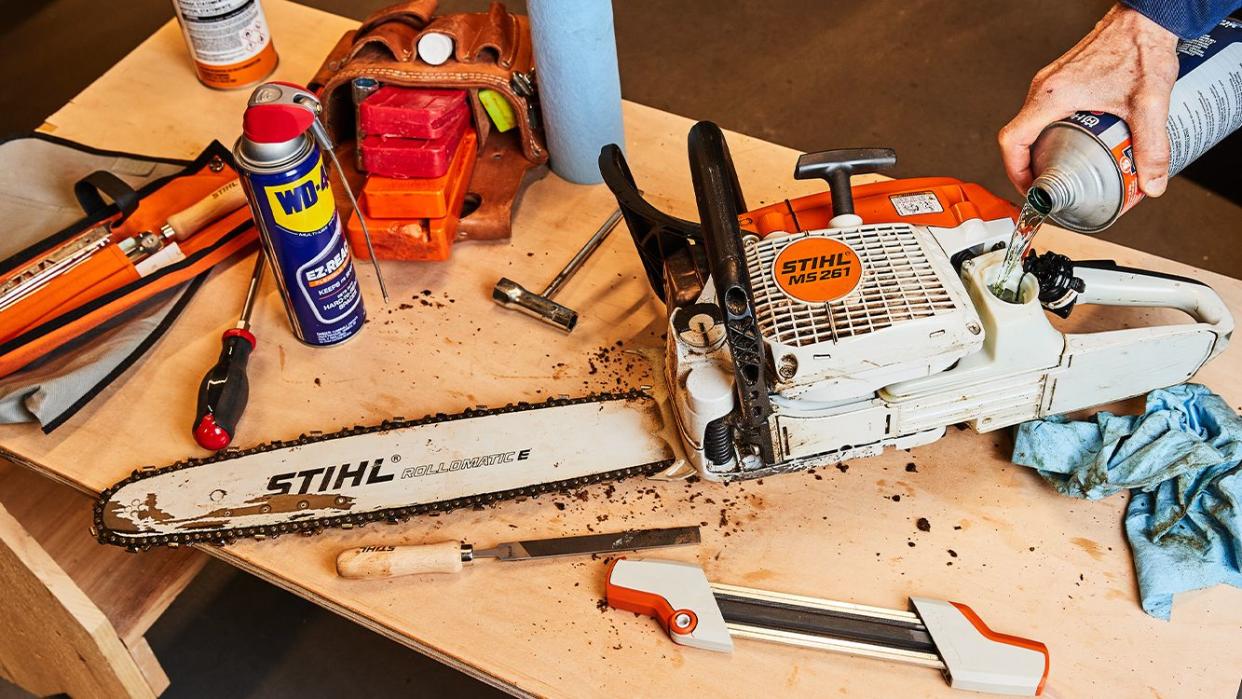
Unless you regularly use a chainsaw to cut firewood, chances are pretty good that your saw won’t be up to the job if called on in an emergency. The typical suburban chainsaw sits around day after day in a shed or garage, in a puddle of oil slowly oozing out of its bar oil reservoir. Its chain is dull, its air filter is clogged, and its two-stroke mixture is so chemically degraded that it barely qualifies as fuel.
Then trees fall over your driveway, and you can’t start the saw to remove them. Or you manage to start the saw and find yourself operating a dangerously dull or cranky piece of power equipment.
If you rely on a saw as a disaster-recovery tool, you need to keep the saw clean, fueled and in a state of readiness. Here’s how you ready your saw, for whatever may come your way.
Basic Maintenance
Air Filter
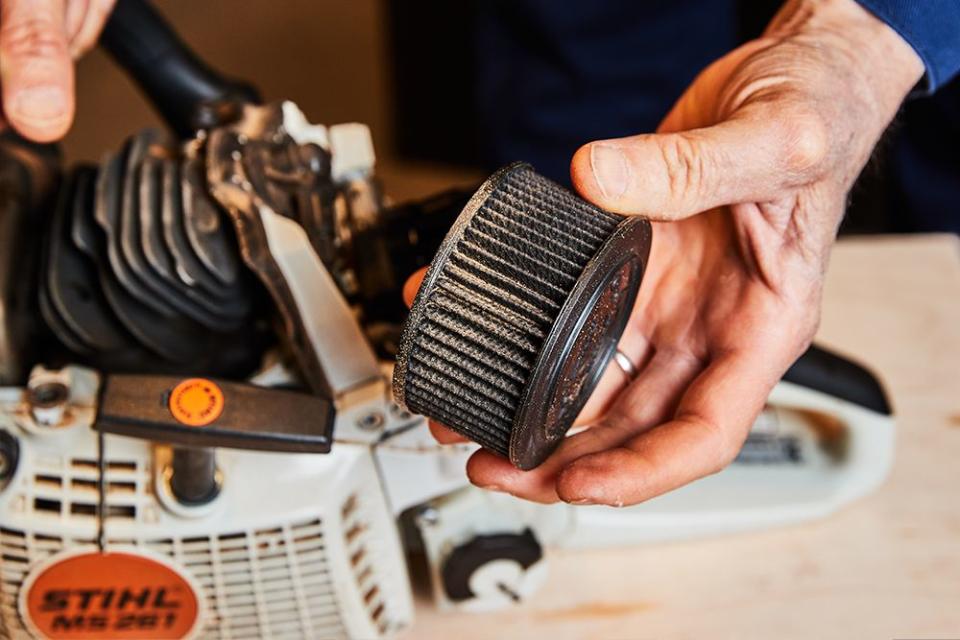
Remove the air filter cover and inspect the air filter. If the filter is only mildly dirty, you can brush it clean or brush it off with compressed air. If it’s really clogged, replace it.
Drain
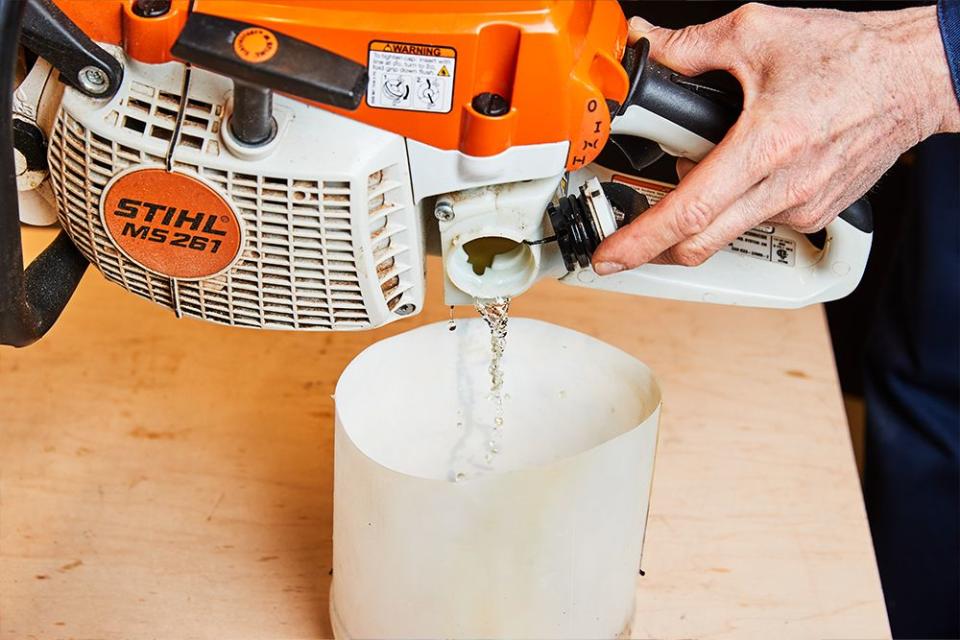
Drain stale two-stroke fuel mixture from the saw’s tank and dispose of it using the resources that are available to you locally, such as your town or county’s chemical disposal facility.
Spark Plug
Remove the spark plug. Inspect it. If it’s fouled with carbon, replace it. If it’s only mildly dirty, brush it clean, check its gap, gap the plug if needed, then reinstall it.
Chain Break
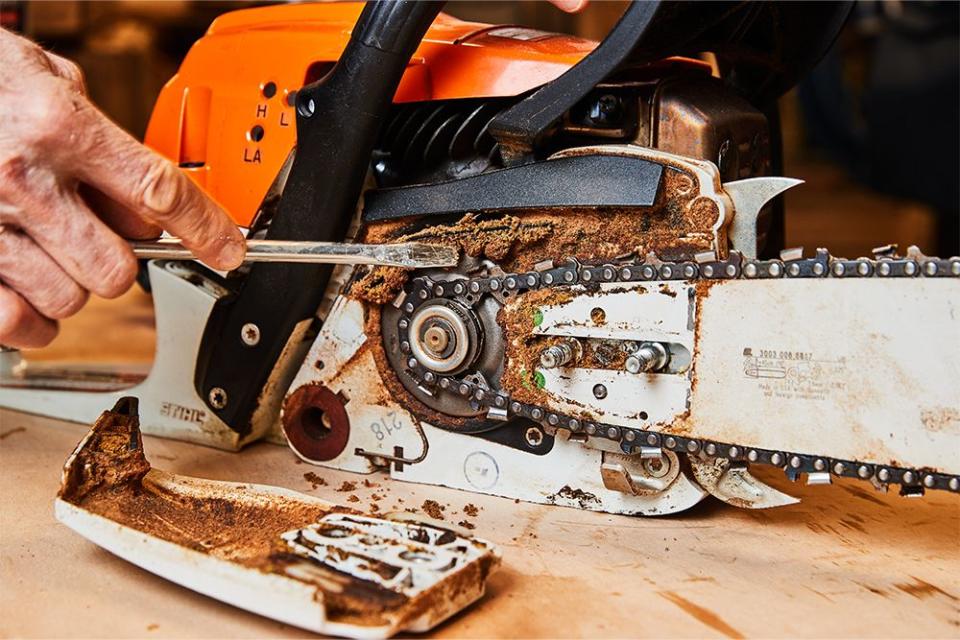
Disengage the chain brake, remove the sprocket cover, then unbolt the bar and clean the groove that the chain runs in. Spray some lubricant into the bar groove and brush it out. Dangle the chain over a shop rag or lay it down on the rag, and blast it clean with spray lubricant or carb cleaner. Brush the chain clean and let it dry.
Remove built-up wood chips, oil, and dirt anywhere on the saw. Brush clean the sprocket area, the chain-tension adjustment screw, and brush clean the underside of the saw. Wipe all surfaces clean. If need be, use a shot of spray lubricant and a shop rag or some strong spray degreaser. Your goal is to make the saw as clean as possible so that after the preparatory work is complete, the saw will be as clean as possible and ready to go.
Reinstall
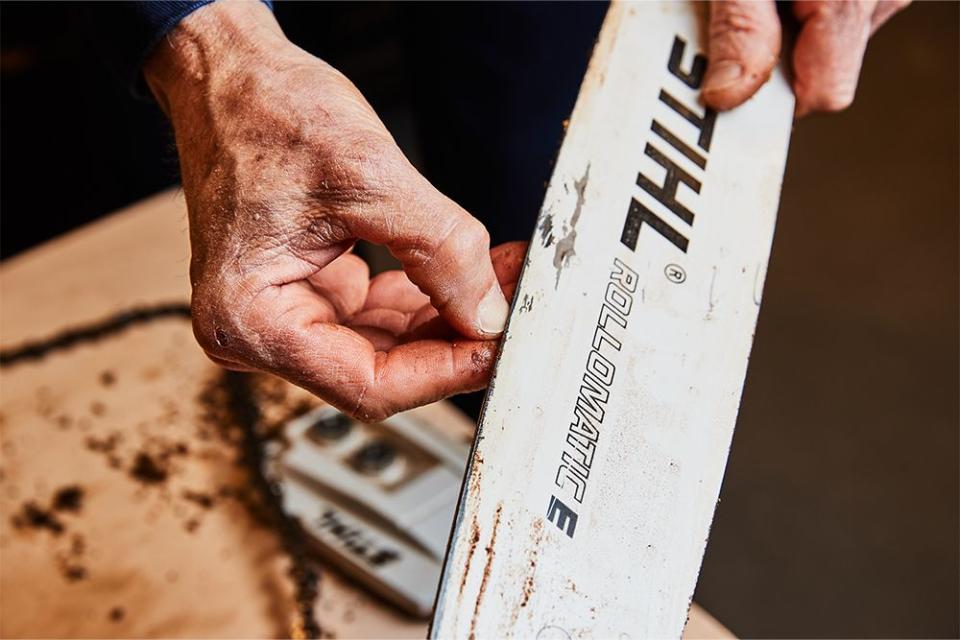
Before you reinstall the bar on the saw, inspect it in daylight for any rough burrs along its chain groove. You can also run your thumbnail along the groove to feel for rough edges. If you find a rough metal burr, remove it with a stroke or two from a relatively smooth file or a sharpening stone. Reinstall the bar.
Reinstall the chain on the bar.
Reinstall anything removed in prior steps: air filter and its cover, the chain sprocket cover, the spark plug.
Sharpen and Adjust
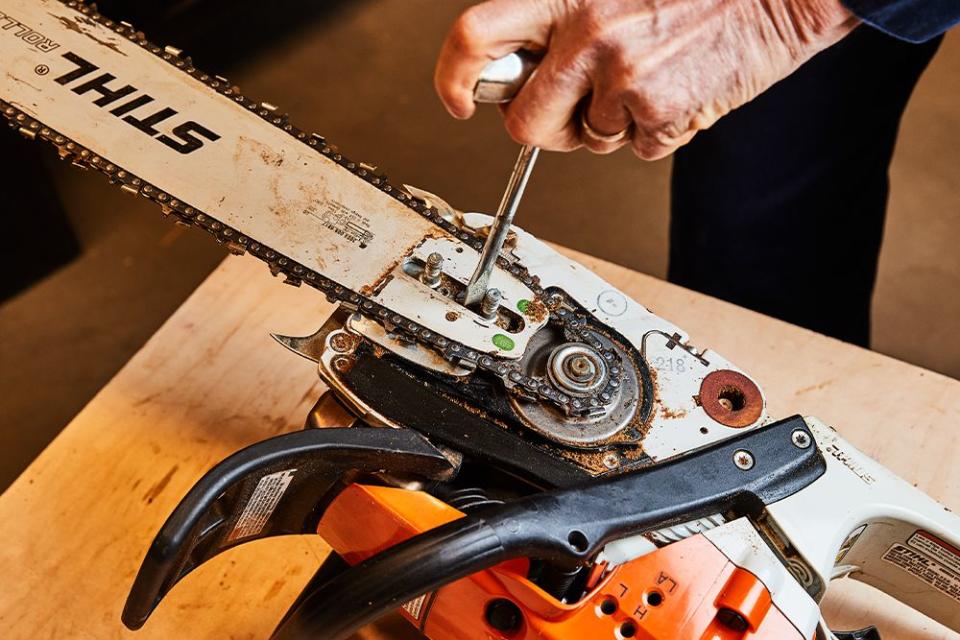
Sharpen the chain using a correctly-sized chainsaw file. If the chain appears to be very badly dulled, replace the chain and bring the old chain for sharpening to a servicing outdoor power equipment dealer. Or discard the old chain in the town or county’s ferrous metal recycling dump and purchase two new chains–one to install on the saw and one as a backup.
Adjust the chain’s tension. With the saw’s chain brake in the run position, position a scrench (the socket wrench-screwdriver combination tool that came with the saw) behind a tooth and push the chain around the bar. Note: do not place the scrench in a tooth gullet. For one thing, you’re liable to slip and cut yourself; a sharp chain can cut through a leather work glove like nobody’s business. Also, it will dull the chain.
Always position the scrench behind a tooth. The chain should turn freely, but it should be reasonably tight with no sag. If it takes a lot of force to turn the chain, the chain is too tight. Adjust chain tension by turning the chain-tension adjustment screw or other adjustment mechanism on your saw. If you don’t know where this is, look it up in the tool’s owner manual.
Gather Supplies and Safety Gear
Gather your fuel and bar oil. You have two choices to fuel the saw. Buy a non-ethanol packaged fuel and fuel the saw with that or mix your own 2-stroke fuel and buy some stabilizer and add that to the fuel to keep it from chemically degrading. When the saw is stored for long periods, I recommend using packaged fuel at the correct ratio specified by the saw manufacturer: 40:1 or 50:1 ratio.
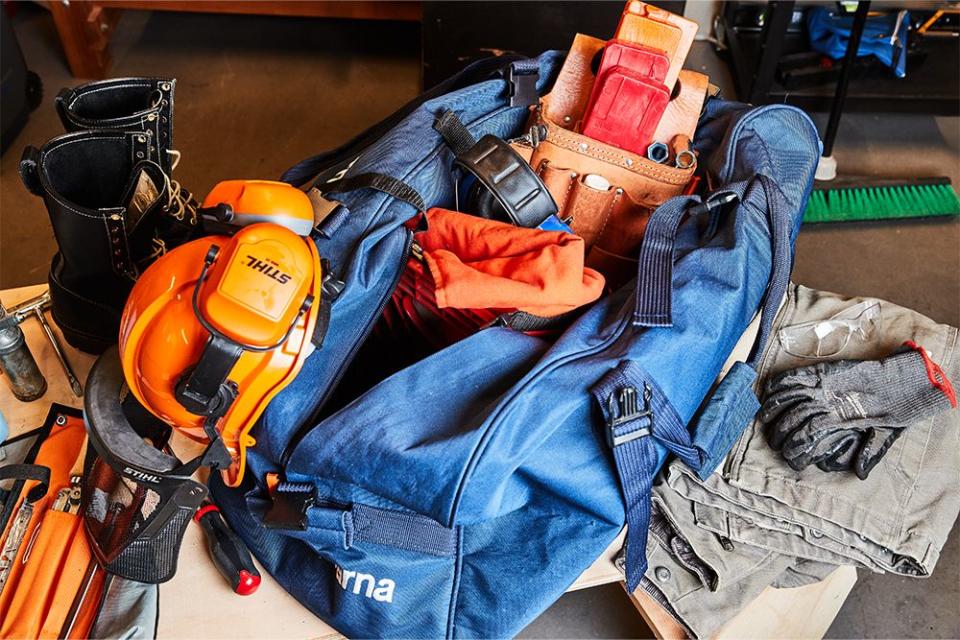
Gather your protective gear and keep it with the saw or so that you have access to it immediately. I keep a separate saw duffel fully stocked. In it I store safety glasses, ear muffs, a helmet and face shield, saw chaps, several pairs of gloves, and a large leather holster that contains plastic felling wedges.
On that last point, you need plastic felling wedges. Place them in a saw cut to keep the log or branch from pinching down on the saw’s bar and learn how to use them when felling trees. You should also consider some form of a cant hook, a tool used to grip and turn logs.
Test Run
Don’t wait until a disaster to test run your saw. Fire it up and get it good and hot. It’s even better if you can make a few cuts. Now stop the saw and set it aside for 15 or 20 minutes. Restart the saw while it’s warm. Many people get this wrong because they’re not familiar with the restart procedure for a warm saw. In trying to start the saw while it’s warm, they flood it instead. If this happens to you, remove the air cleaner cover and the air cleaner itself. Remove the saw’s spark plug and with the with the throttle control in the Off position, pull the saw’s recoil handle several times to move the cylinder up and down in its bore to remove excess fuel in the bore. Set the saw aside for 15 or 20 minutes, re-assemble the saw, then restart it as you would a cold saw.
If you’re unsure of the warm-start procedure for your specific chainsaw, look it up in the owner’s manual. Manufacturers have slightly different advice on how to start a warm saw, and you should be well familiar with the procedure that applies to your saw.
A saw should start cold or hot, no exceptions. If either one is difficult, bring it in to a servicing outdoor power equipment dealer and report the problem (hard cold start, hard warm start, or both).
You Might Also Like

